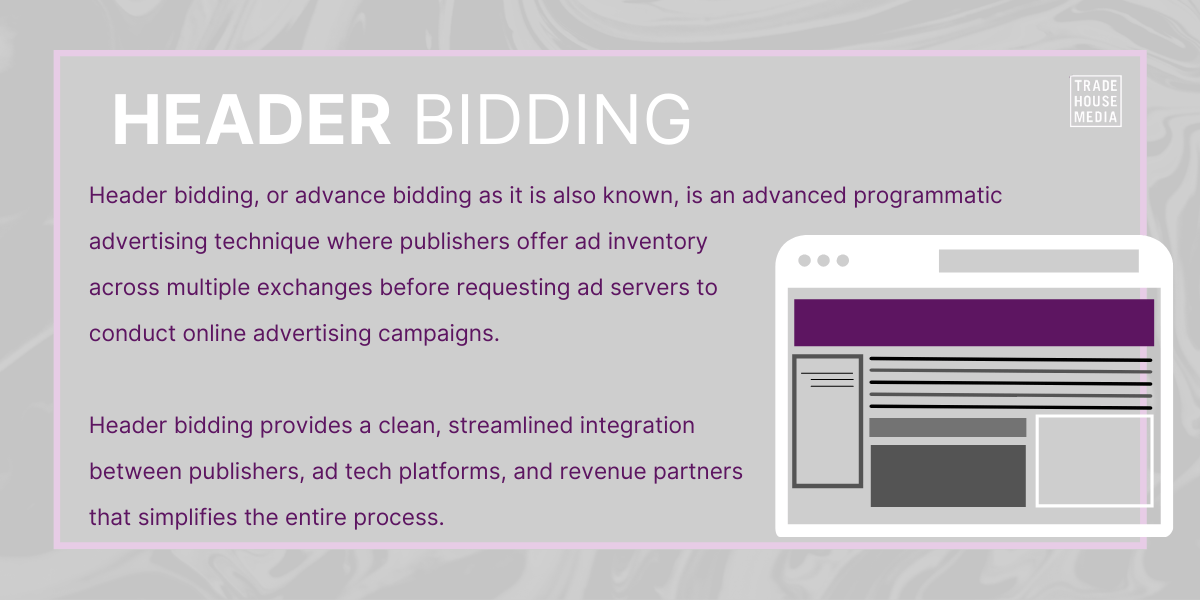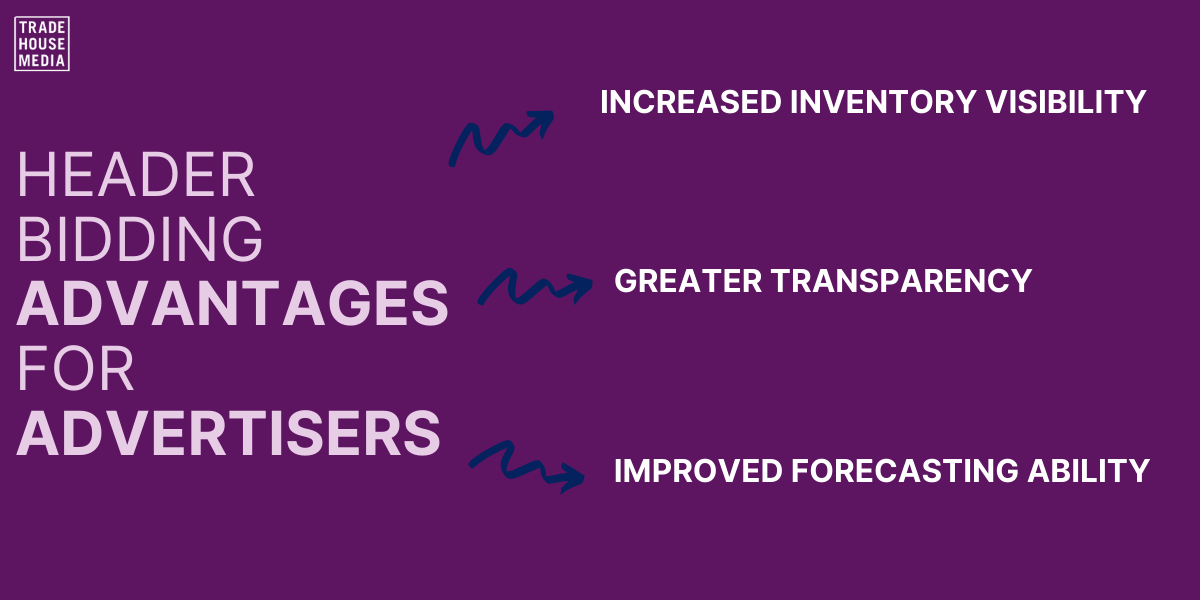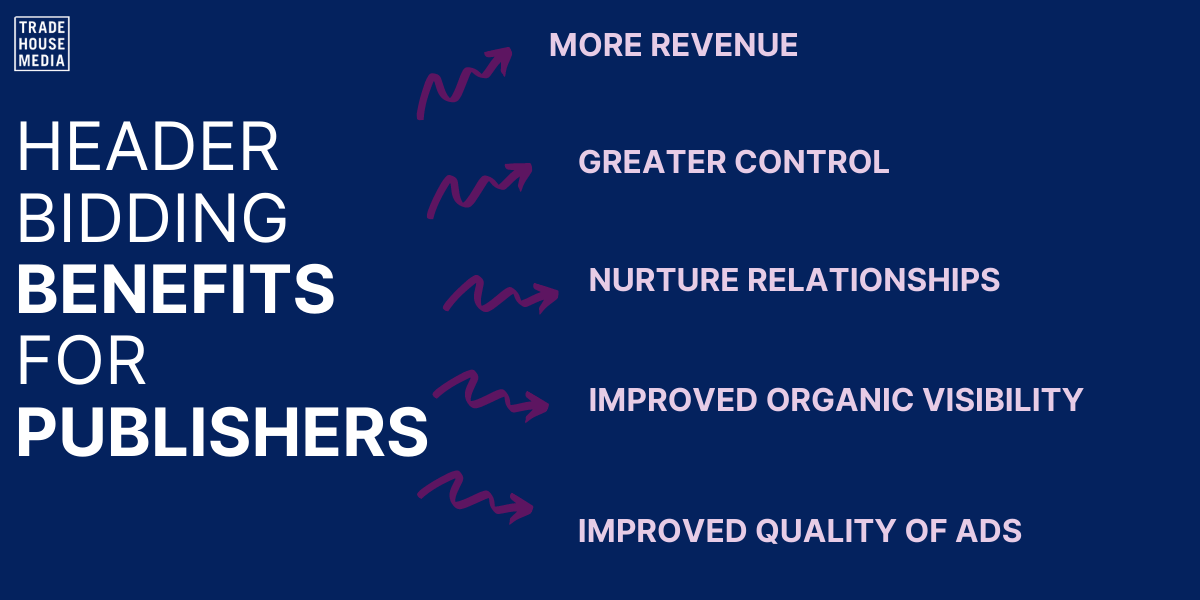Header bidding has changed the way that publishers auction inventory and effectively increased yield thanks to free-market competition. A recent study from Statista found that 76 percent of publisher sites worldwide are currently using header bidding as part of their ad technology stack.
In this guide, we’ll look at how header bidding works, recent developments, and how publishers and advertisers are using this technology to improve efficiency.
What Is Header Bidding?
Header bidding, or advance bidding as it is also known, is an advanced programmatic advertising technique where publishers offer ad inventory across multiple exchanges before requesting ad servers to conduct online advertising campaigns.
Header bidding enables publishers to maximise yield and command competitive, free-market rates for inventory based on demand from advertisers. On the flip side, advertisers also have visibility of past campaign performance and can bid in-line with how much value they place on impressions from different sites.
How Does Header Bidding Work?
Header bidding enables publishers to display their advertising inventory across multiple ad exchanges prior to ad servers conducting online advertising campaigns. Header bidding provides a clean, streamlined integration between publishers, ad tech platforms, and revenue partners that simplifies the entire process.
Header bidding provides an independent alternative to Google’s waterfall method. In spite of Google’s recent claims that header bidding kills page speed and impacts website search visibility (SEO), some independent tests have revealed that header bidding is (in some cases) faster than Google’s own alternative.

Wait, isn’t this what SSPs are supposed to do?
Well, yes, in a way.
Supply side platforms (SSP) are ad tech platforms that enable publishers to manage their advertising inventory and populate their sites with advertisements – sounds familiar, right?
In theory, SSPs have a similar aim to header building – to connect publishers with demand sources as efficiently as possible. The problem is, each SSP is independent and competing with separate SSPs, which causes fragmentation between demand sources.
While SSPs aim to achieve the highest bid from their own demand sources, this is not always aligned with the highest overall bid – which means that publishers miss out. Header bidding offers impressions to multiple SSPs and exchanges simultaneously which increases fill rate, market competition, and increases overall yield.
Header bidding effectively reduces fragmentation and ensures that multiple advertisers can bid for an impression – irrespective of their position in the waterfall. As a result, an SSPs position in the waterfall is no longer the main determining factor in their success.
Why is header bidding good for advertisers?
While header bidding is typically viewed as a key piece of ad tech for publishers, there are also a number of benefits for advertisers.

Increased inventory visibility – header bidding provides a centralised access point for advertisers to view publisher inventory. This means advertisers can view a full range of inventory options which provides more access to audiences that can be matched to the goals of the campaign.
Greater transparency – view publisher impressions and critical performance stats before purchasing ad space.
Improved forecasting ability – header bidding provides constant access to inventory which means that advertisers can more accurately forecast campaign performance based on what is available at any given time.
Why is header bidding good for publishers?
Header bidding allows publishers to auction inventory to the highest bidder and command the highest possible market rate. Given that header bidding enables publishers to conduct live auctions from all bidders, publishers can then sell their stock based on individual impressions.
But that’s not all, some of the most notable benefits to publishers include:
More revenue – publishers can adjust prices as the market demands to maximise their revenue from advertisers. In a competitive market, publishers can significantly increase the value of their inventory to meet changes to the market.
Greater control – header bidding means that publishers are able to control who participates (and ultimately) purchases their inventory. For publishers, that means more control over the ads that end up on their sites.
Nurture relationships – Publishers can choose to favour and offer preferential treatment to advertisers that have spent big money with them in the past. In doing so, header bidding enables publishers to nurture important relationships more effectively with preferred advertisers.
Improved organic search visibility – speed kills search engine visibility. Google’s page experience update in 2021 was another step towards ensuring that sites provided better loading and on-site experiences for users. Header bidding means faster allocation which improves SEO and overall ad visibility.
Improved quality of ads – just like anything, the cream rises to the top in a competitive market. Header bidding means that the quality of advertisers increases, and the quality of ads displayed to the end user is inherently higher.

What Are Header Bidding Wrappers?
A header bidding wrapper – sometimes referred to as a container or framework, is a piece of JavaScript that goes in the header of a web page. The wrapper organises buyers and sets rules for the programmatic auction which means that publishers can maximise their inventory visibility and command the greatest market yield.
Header bidding wrappers send requests to demand partners, procure bids, set the rules for the auctions, and sets a universal timeout so that publishers can efficiently manage demand partners. The most common types of header bidding wrappers include:
- Open source
- Managed solutions
- Proprietary solutions
All types of header bidding wrappers can be used to run header auctions on the client and server-side.
What are the downsides to header bidding?
Other than requiring expert assistance to implement, header bidding is being throttled by latency and Google’s increasing emphasis on user experience and page speed performance metrics. For every tag that is added to the header of a website, latency is increased, and page performance metrics suffer.
In addition to site performance issues, there can be report discrepancies that result from poor network quality on the user end, the user bouncing away from a web page too quickly, ad blockers, and improper configuration.
While header bidding seems to be a win-win for publishers and advertisers, these drawbacks continue to throttle complete market adoption and mean that publishers are choosing other ad tech alternatives.
Final Thoughts
Header building remains a contentious issue for publishers. While the technology is not new, it continues to provide a remedy for many of the issues associated with traditional media buying. Potential latency issues and inefficient demand source negotiating are far outweighed by increased fill rates, control, and ad quality.

